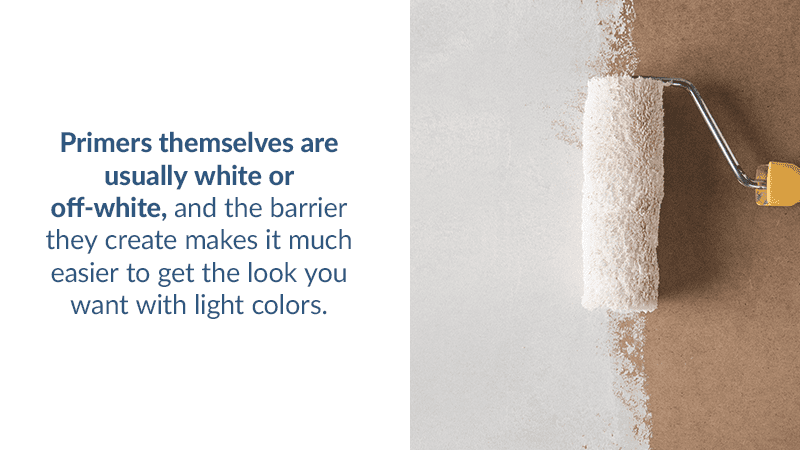We know paint primer can be annoying to think about. The idea of taking the time and work to paint a layer before you even start painting the color you want isn’t exactly easy to consider. But there are many good reasons that primers exist, and for certain surfaces, primers are required to get the results that you want. Let’s go over a few of the most important advantages primers can provide ““ and what that means for your painting project.
Primers Offer a Stable Base
Not every surface is ready to paint immediately. Some surfaces are too porous (like various woods), and your primary paint color will seep into the surface and end up looking rough and weird. Other surfaces may be too shiny and slick, making it difficult for paint to adhere. And some surfaces may have small flaws and cracks that could show up even after you finish painting.
A primer is designed to fix these problems by providing a base on which your primary paint can bond and cure properly. The result is a smooth coat of paint with no uneven spots or peeling problems. This may be especially important for paint that’s exposed to the elements or a lot of sunlight.
Covering Stains and Preparing Dark Surfaces
Let’s say that your primary paint color is a very light shade, maybe a light neutral color that’s designed to go with everything. The problem is that light paints don’t always do well when applied to a surface with dark stains or a surface that’s dark overall (such as from a darker color of paint). Even with multiple coats, the dark color may show through after the paint has cured.
Primers step in and make it easier to apply light colors to a dark surface. Primers themselves are usually white or off-white, and the barrier they create makes it much easier to get the look you want with light colors. It may still take a couple of layers, but you’ll be able to get the appearance that you want without finding out, too late, that the dark surface is a problem.

Choosing a Primer
Keep in mind that there are many different primers available, and some are designed for specific tasks. You can find primers that are made just for wood, primers that are made to cover up serious stains, and primers that are designed to help paints adhere to slick surfaces, among many other options.
Other Considerations
Primer isn’t always necessary in every case. For especially clean drywall with a low finish, you probably won’t need to use any primer. If you are painting a dark color over a lighter color, primer may not be necessary as long as the surface is ready. There are also “self-priming” paints that are especially thick and can be used in situations where a little primer may be a good idea, but you don’t need to create a full pre-layer.
Still, have questions? Give us a call, and we’ll be happy to discuss your primer options, when to use a primer and anything else you should know.
The post 3 Benefits of Primer appeared first on Tar Heel Painters.





